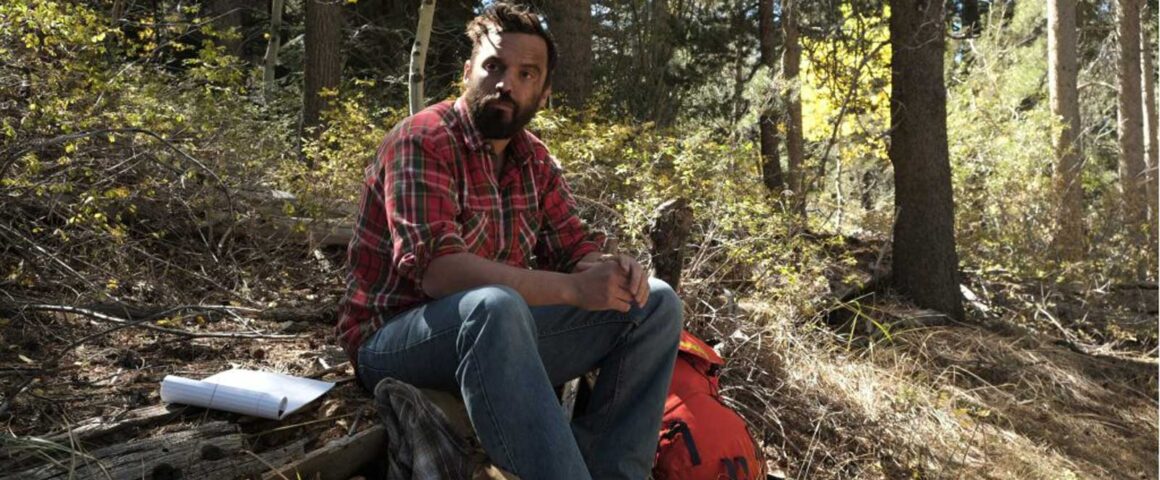Trent O’Donnell’s Ride The Eagle has the makings of becoming the next quirky indie darling with its charming aesthetics and top-tier cast. And though it attempts to pick up the mantle from films like “Little Miss Sunshine” and similar fuzzy, off-beat dramedies, deep down, this collaboration between O’Donnell and actor/screenwriter Jake Johnson ultimately severs a lot more pain than pleasure.
The plot focuses on Leif (Johnson, “The Mummy”), a deadbeat musician who loves his dog, Nora, and playing in his current band. He eventually discovers that his estranged mother, Honey (played by everyone’s favorite cinematic dying mother, Susan Sarandon, “Blackbird”), has passed away — leaving him a beautiful woodland cabin. But, there’s a catch — before he can make the scenic residence his own, Leif must complete Honey’s detailed list of life-affirming tasks. This discovery sets our scruffy hero on an adventure filled with a scary individual in a yellow raincoat, facing his lost romance, trying to decide what to do with a ridiculous amount of pot, and many other awkward (yet heartwarming) activities along the way.
Now there’s no denying that aesthetically speaking, Ride The Eagle has a certain kind of appeal to it. Jake Johnson can be a likable talent since he evokes that flawed, yet relatable, quality that’s hard to find in movie stars of his caliber. Plus, with supporting players like Sarandon, J.K. Simmons (“Father Figures”), and D’Arcy Carden (“Bombshell”), it has the makings of greatness on paper. But the narrative and cinematic sandbox that this cast must play in are frustrating — in large part due to the loose (at times non-existent) script by O’Donnell and Johnson.
First, It’s important to know that the movie was shot in the midst of the pandemic — a fact that becomes abundantly clear when examining the shot compositions, narrative beats, and many other elements that seem tied to the on-set restrictions in place. And while filming in such situations should be seen as quite the accomplishment, these boundaries resulted in some of the most infuriating moments of ad-libbed and awkward dialog — so much that the felt (and I imagine, tasted) like the lackluster filling of a bad grocery store birthday cake.
This same sort of mundane, under-cooked feeling can also be said of the tasks Honey sets out for Lief throughout the course of the movie. Though they all have a grounded and (for the most part) believable quality to them, each of Honey’s requests seem to come from the book of mountain-movie clichés. We’ve all seen our fair share of characters that have to hunt for food, go fishing, fall down a hill — and though Ride The Eagle feels like its presentation of those moments is unique, sad to say, the film is far from it.
Yet perhaps the most exasperating element within Ride The Eagle is its almost unrelenting obsession with being cruel to its lead character. Sure, Lief is a guy that perhaps needs to go through some drastic situations to change his life for the better — including getting over the loss of his mother. But O’Donnell and Johnson go to almost cartoonish lengths to prove how bad of a situation Lief is in, especially if he doesn’t fulfill Honey’s required tasks. And though many of those situations fall into the spoilery category if divulged, by the end of their reveal you might be compelled to scream into a pillow out of shear frustration.
Thankfully, this rustic flick contains a special ingredient: Nora. This black lab was adopted by Johnson during the pandemic and her incorporation into the script is pure movie magic — making her (dare I say) perhaps the best animal actor on screen in quite sometime. Maybe its my love for fluffy co-stars, or the excellent editing skills of Daniel Haworth, but this enchanting canine steals the show (and audiences hearts) from the first frame she’s seen on screen. Like Johnson has stated in interviews, she has a human quality to her interactions — and in a motion capture/CGi-filled Hollywood landscape, its nice to see a genuine bond between a dog and a human on celluloid again. Sorry “Call of the Wild,” better luck next time.
Aside from the brilliant Nora, Ride The Eagle does include some other magical elements. For one, the cinematography by Judd Overton shows off the delightful Yosemite locale in the most picturesque of ways — even during the films more dramatically infused sequences. Jeff Cardoni’s music ties a nice bow over the most tender of sequences, which compliments Haworth’s editing efforts. And though its easy to mourn the version of this movie that didn’t have COVID getting in the way of the interaction between its characters, the chemistry exhibited by Johnson and Carden is sweet (in that Pam and Jim from “The Office” kind of way).
Overall, Ride The Eagle is a movie that had a lot of potential but couldn’t stick the landing. There’s nothing outwardly wrong with it (like so many other films created in the midst of our current global crisis), but it is far from doing anything revolutionary either. Perhaps on an alternative timeline, in which this film could have been made in a more organic timeframe (with flashbacks and other elements included), this creation by O’Donnell could have be something special. But in an indie landscape that needs more movies that take risks than play it safe, Ride The Eagle certainly stays in a comfortable (and ultimately forgettable) lane.



